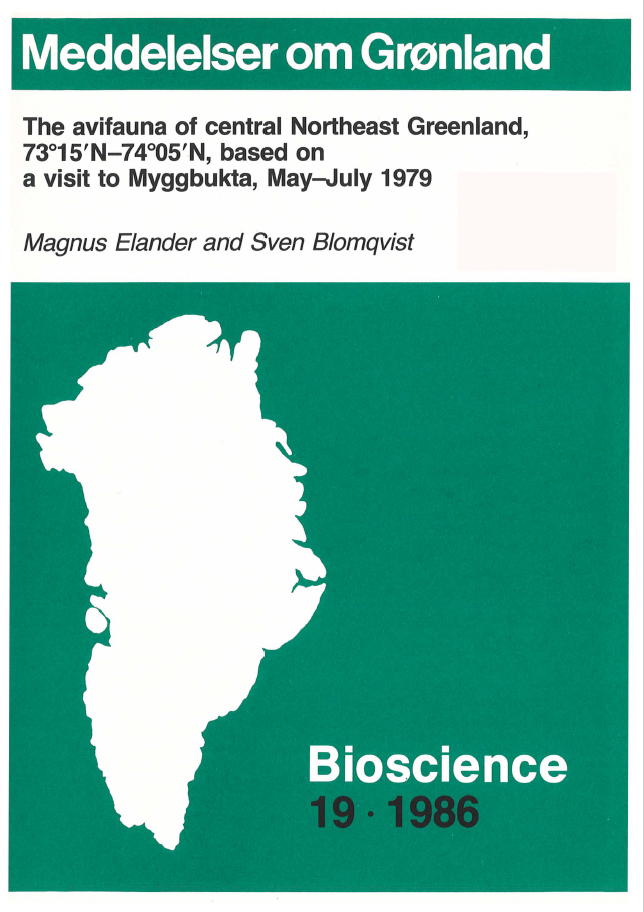The avifauna of central Northeast Greenland, 73°15'N- 74°05'N, based on a visit to Myggbukta, May- July 1979
DOI:
https://doi.org/10.7146/mogbiosci.v19.142341Abstract
The high arctic avifauna of central Northeast Greenland between 73°15'N. and 74°05'N. is reviewed and various ecological and faunistic aspects are considered. The recent field data were collected during a stay at Myggbukta (73°29'N., 21°34'W.), from May to July 1979. A few records from 1982 (Elander & Ericson unpubl.) are included.
The coastal plain near Myggbukta harbour a comparatively dense population of birds, in particular some species of ducks, waders and skuas. The nesting habitat selection of eight species in the census area is plotted on vegetation type maps.
In 1979, 38 species were recorded in the study area. Eleven species were found breeding, and five species were most probably breeders in or close to the census area. Seven species new to the area were recorded in 1979, including the Wood Sandpiper (Tringa glareola, new to Greenland). In 1982, another two species new to the area were recorded. The total number of species in the study area now amounts to 56.
Selected meteorological data from Myggbukta between 1932 and 1958 are compared with the weather situation in 1979. It is concluded that the disappearance of snow and ice may affect the timing of arrival for certain lake dependent species.
Two topics were studied in more detail in 1979: (1) Food supply and pre-nesting behaviour among King Eider (Somateria spectabilis) and Long-tailed Duck (Clangula hyemalis), and (2) Mating systems, food resources and foraging behaviour among waders, with special attention to the genus Phalaropus. The potentially available food resources for these species were sampled and analysed qualitatively, and the larvae of midges (Chironomidae; mainly Chironominae) were also analysed quantitatively. The midge larvae were found to be almost the sole prey type initially available for all lake-feeding species. On this basis spatial niche segregation among King Eider, Long-tailed Duck, Dunlin (Calidris alpina) and Red-necked Phalarope (Phalaropus lobatus) is discussed.

Downloads
Published
Issue
Section
License
Coypyright by the authors and the Commision for Scientific Research in Greenland / Danish Polar Center/Museum Tusculanum Press as indicated in the individual volumes. No parts of the publications may be reproduced in any form without the written permission by the copyright owners.

